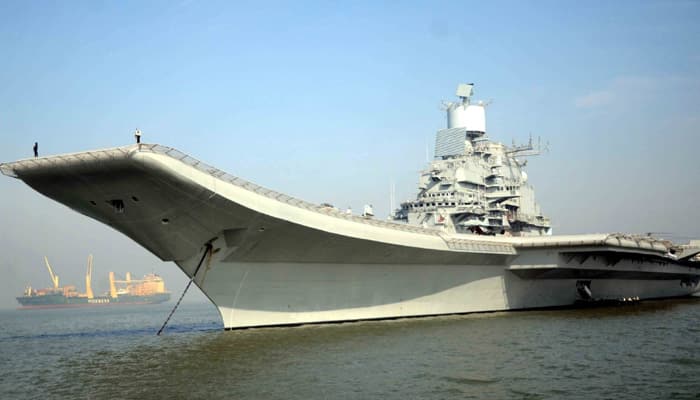Chennai: India, Japan and the United States of America on Monday began the Malabar Naval Exercise-2017 in the Bay of Bengal in a bid to achieve deeper military ties among the three nations.
Taking part in the trilateral naval exercise are American 100,020 tonne supercarrier USS Nimitz that can carry 90 fixed wing aircraft and helicopters (CVN68), guided-missile cruise USS Princeton (CG59), guided-missile destroyers USS Howard (DDG83), USS Shoup (DDG86) and USS Kidd (DDG100), a Poseidon P-8A aircraft as well as a Los Angeles fast-attack submarine.
Besides, Japan Maritime Self Defence Force ships 27,000 tonne JS Izumo (DDH 183), 6,300-tonne destroyer JS Sazanami (DD1 13) along with Indian Naval Ship Jalashwa and the 45,400 tonne INS Vikramaditya - a modified Russian Kiev-class aircraft carrier, are participating in the joint Naval exercise.
India will also deploy two Kamorta class anti-submarine warfare corvettes - the first anti-submarine warfare stealth corvettes built in India.
Also participating from the Indian Navy will be two Shivalik class frigates - the first stealth warships built in India, two destroyers, a Kora class 1,350-ton guided missile corvette, and tanker INS Jyoti.
The 21st edition of the exercise, conducted ashore and at-sea, would include professional exchanges on carrier strike group operations, maritime patrol and reconnaissance operations, surface and anti-submarine warfare.
Medical operations, damage control, explosive ordinance disposal, helicopter operations and anti-submarine warfare would also take place.
Amid China's increasing presence in the Indian Ocean, the July 10-17 exercise comes amid reports of Chinese warships in the Indian Ocean Region in the name of anti-piracy operations, and Beijing's aggressive posturing in the South China Sea.
Malabar is a joint exercise between India and US, which now has Japan as a permanent partner. Australia wanted to participate as an observer this year but was not included, following reservations by China.
Malabar 2017 is the latest in a continuing series of exercises that has grown in scope and complexity over the years to address the variety of shared threats to maritime security in the Indo-Asia Pacific, a US embassy statement said.
While ashore in Chennai, training will include subject matter expert and professional exchanges on carrier strike group operations, maritime patrol and reconnaissance operations, surface and anti-submarine warfare, medical operations, damage control, explosive ordnance disposal (EOD), helicopter operations, and visit, board, search and seizure (VBSS) operations.
The at-sea portions will be conducted in the Bay of Bengal and are designed to advance participating nations' military-to-military coordination and capacity to plan and execute tactical operations in a multinational environment.
Events planned during the at-sea portions include liaison officer professional exchanges and embarks; a photo exercise; submarine familiarization; high-value unit defence; air defence exercises; medical evacuation drills; surface warfare exercises; communications exercises; search and rescue exercises; helicopter cross-deck evolutions; underway replenishments; gunnery exercises; VBSS exercises; and anti-submarine warfare, the release said.
"Indian, Japanese and US maritime forces have a common understanding and knowledge of a shared working environment at sea. Each iteration of this exercise helps to advance the level of understanding between our Sailors, and we hope to be able to continue this process over time. As members of Indo-Asia-Pacific nations, our maritime forces are natural partners, and we look forward to continuing to strengthen our bonds and personal relationships," a statement from US embassy said.
China has in the past expressed reservations over the Malabar exercise turning into a multilateral one.
In 2007, Australia was included along with Japan in the exercise. But concerns expressed by China led to its withdrawal.
(With Agency inputs)
















